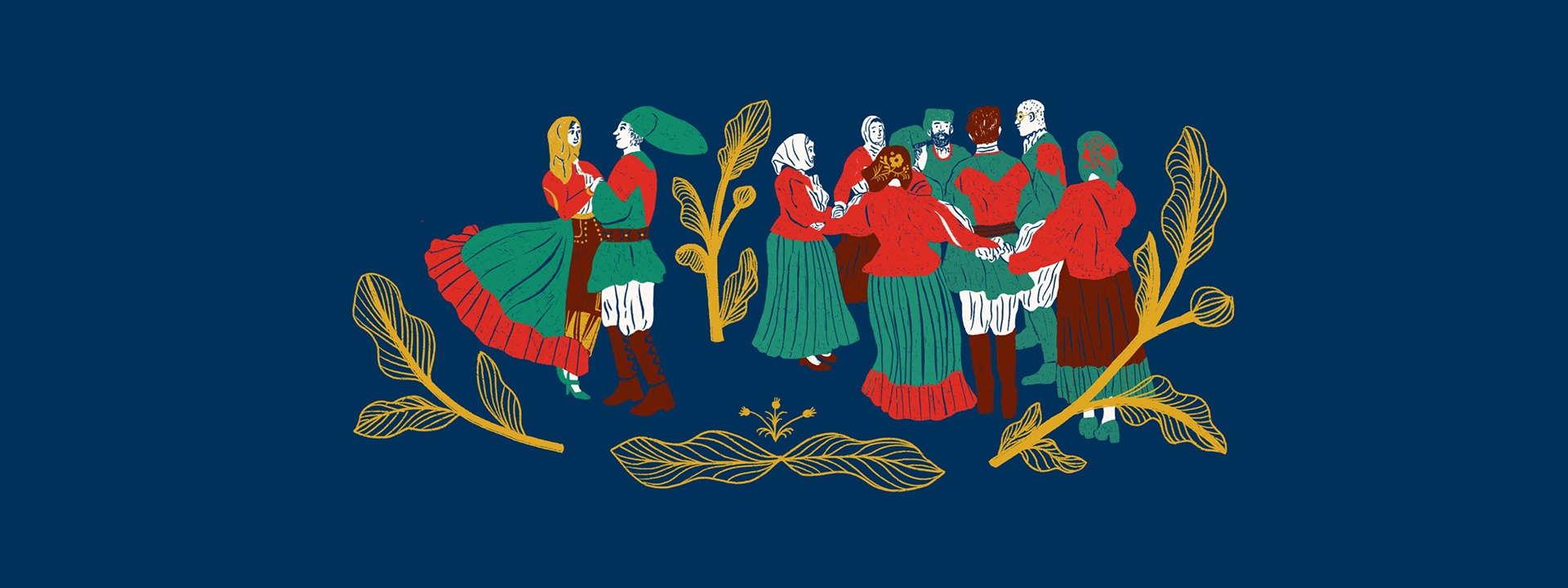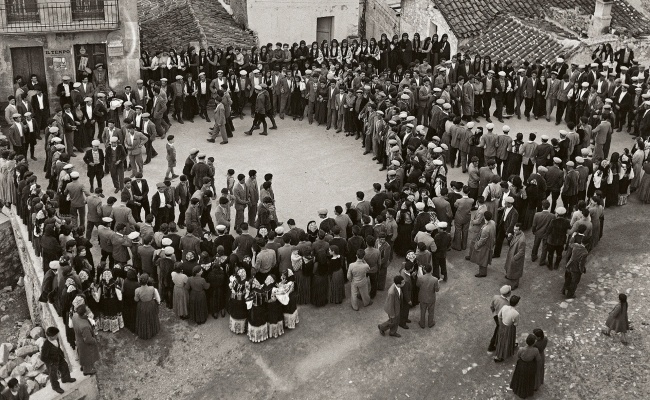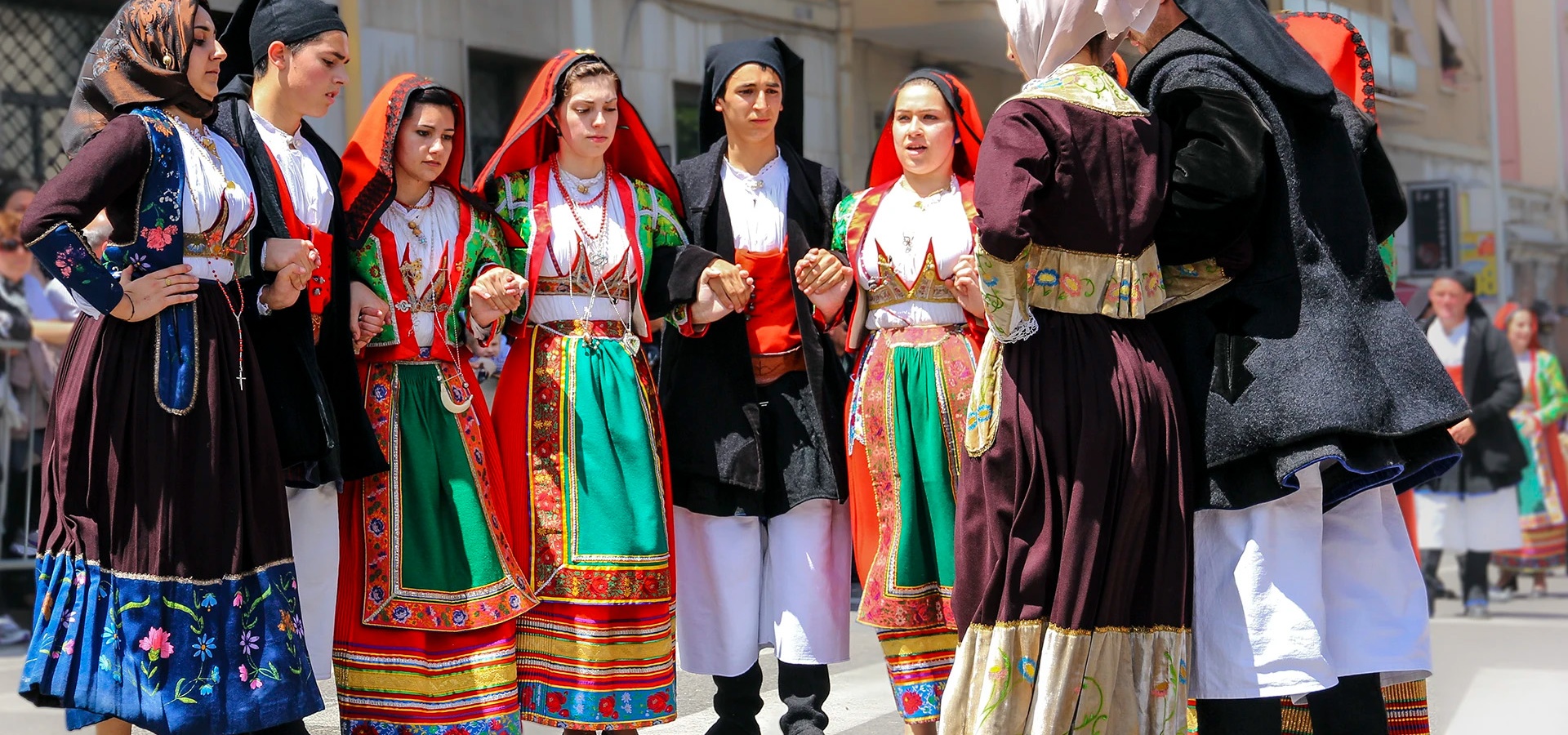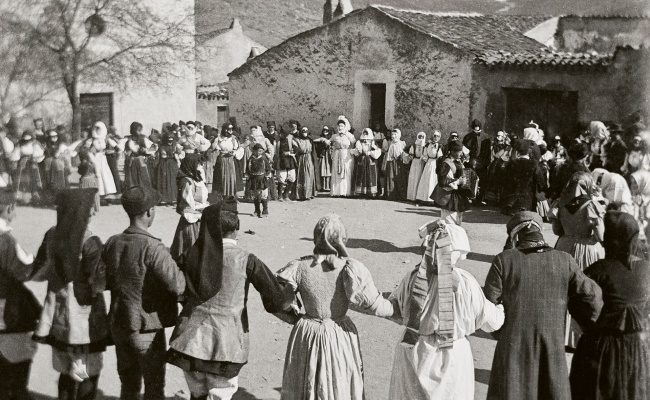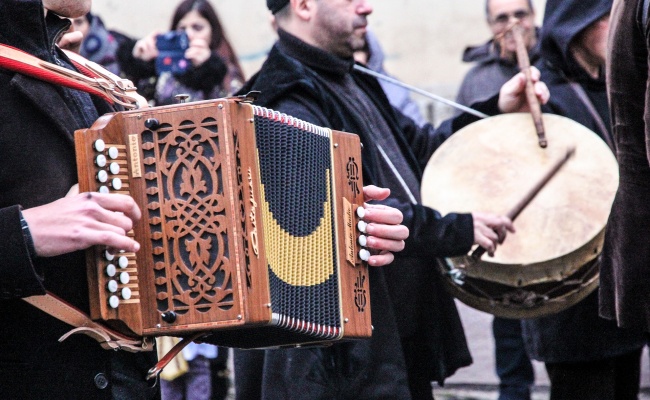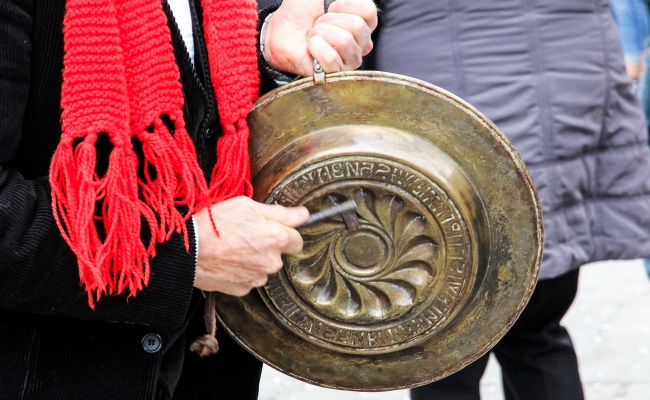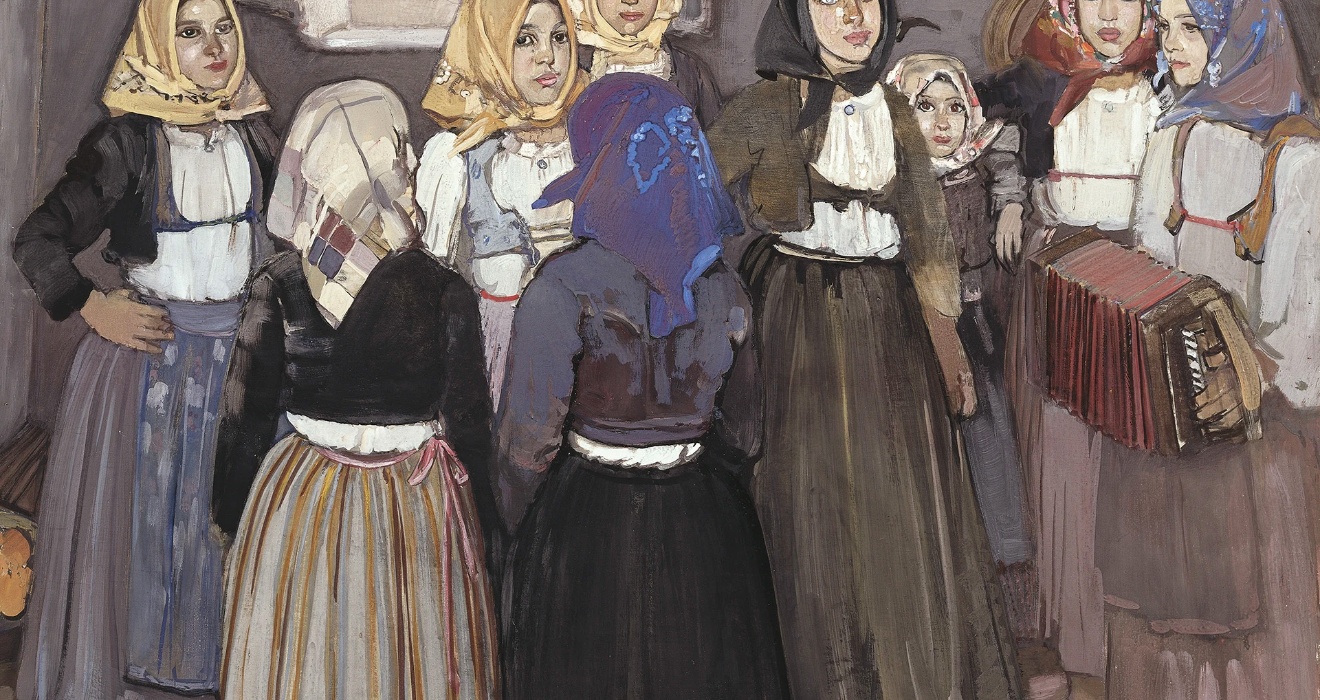Sardinia is the Italian region that has most kept alive its tradition of ethic or local dance, especially in the central part of the island.
Dance
Description
There are numerous variants (passu, passu torrau, dillu, dantza, bicchiri, tsoppu, etcetera).
But Su ballu tundu is unquestionably the best known and most popular.
It is a circle dance in which participants hold hands and move in coordination to the rhythm of the music, and is mostly performed on holidays and during celebrations, with people of all ages joining in.
Musical accompaniment is usually provided by an accordion, but sometimes also a harmonica, a kind of Sardinian singing called canto a tenore, trunfa (a Sardinian Jew’s harp) and, especially in Gavoi, drums and a small wind instrument called pipiolu.
In and only in Ottana, dancing is accompanied by a S’Affuente, a plate that was originally used for collecting alms during the liturgy and was then turned into a musical instrument.
Sardinian dance requires immense technical skill from dancers and musicians alike, with the dancers holding each other’s hands or arms to form a circle, moving together clockwise. During the dance, the basic movement is a kind of jump of the torso to the beat, combined with various steps. Each step is strictly paired with the musical rhythm and needs to be executed gracefully: the upper part of the body stays rigid and mobility is limited exclusively to the legs.
 Nuorese Cultural District
Nuorese Cultural District